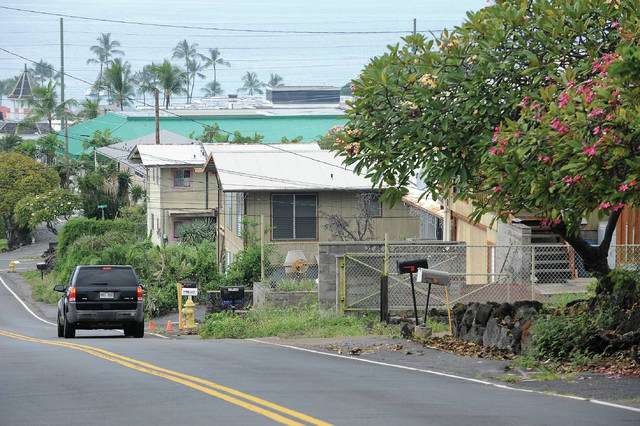A central sewer system for the Lono Kona neighborhood took a big step forward Thursday when the County Council agreed on maps and a funding plan.
A central sewer system for the Lono Kona neighborhood took a big step forward Thursday when the County Council agreed on maps and a funding plan.
The $6.5 million project, originally slated to be completed in 2016, is now forecast to be finished in July 2019.
There was a steep learning curve for the county because it is the first sewer improvement district undertaken, said Environmental Management Director Bill Kucharski. He said the county has done improvement districts for water systems before, but the sewer project was very different.
“It took us longer to get our act together,” Kucharski said.
The project will be built mauka of Kuakini Highway in an area residents dubbed “Hamburger Hill.”
A $4 million U.S. Department of Agriculture Rural Utilities Service Grant will fund the bulk of the program. The council also initially approved authorizing a $2.4 million general obligation bond, which will be paid back by property owners hooking up to the system.
“It would be a travesty if we lost the funding opportunity they gave us,” said Kona Councilman Dru Kanuha, who represents the area. “We have a mandate that we have to get off cesspools.”
The Lono Kona sewer system improvement district will include 145 assessment units — the equivalent of 268 single-family homes — on 110 lots. Lot owners will be assessed an estimated $9,090 per single-family equivalent unit. The county will allow property owners to make annual payments of about $498 per single-family equivalent.
Kucharski said the county will pick up the difference if construction bids come in more than 10 percent higher than estimated some years back. That way, the county won’t have to go back for another public hearing, taking more time and paperwork.
The county also plans to subsidize the assessments for $294,526 for 10 properties owned by qualifying nonprofits.
During the 2015 public hearing, residents had mixed reactions about the necessity and cost of the project. But few had outright opposition. The residents voted to tax themselves to pay for the project.
The subdivision, created in 1962, faces sanctions from the Environmental Protection Agency. The design and bid process is expected to take at least a year.
Several landowners within Lono Kona received violation notices from the EPA for their continued use of large-capacity cesspools. The project area is a higher density urbanized area where lot sizes generally do not have sufficient area for on-site disposal systems that require leach fields, according to county consultants.
The EPA banned large-capacity cesspools in 1999 and mandated their closure by 2005.
Email Nancy Cook Lauer at ncook-lauer@westhawaiitoday.com.

